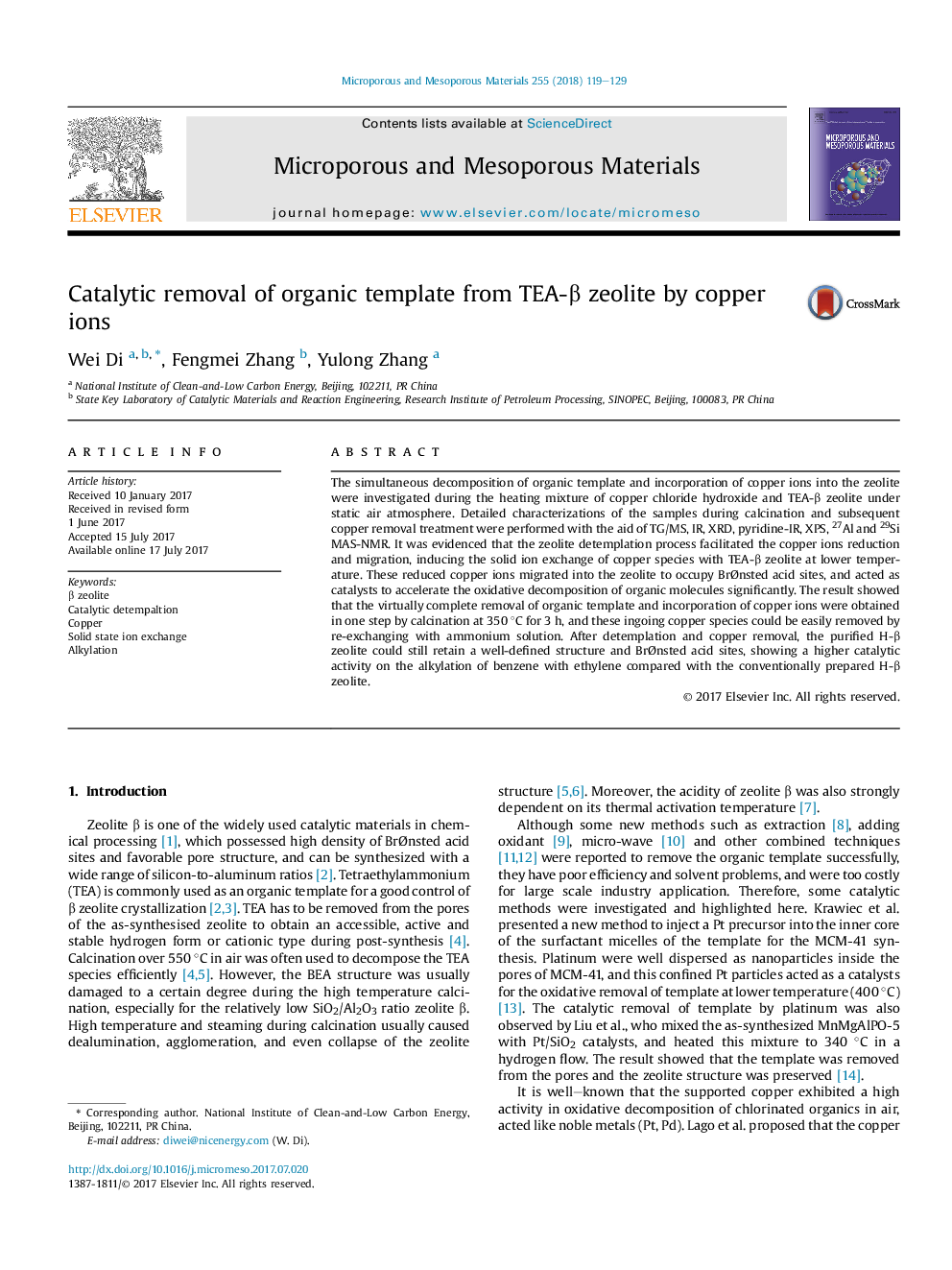| Article ID | Journal | Published Year | Pages | File Type |
|---|---|---|---|---|
| 4758119 | Microporous and Mesoporous Materials | 2018 | 11 Pages |
â¢Removal of organic template was realized at low temperature thermal treatment.â¢Detemplation process facilitated the SSIE between supported copper and zeolite β.â¢The ingoing copper species acted as catalysts to accelerate the oxidative decomposition of organic template significantly.â¢The catalytic detemplation method preserved more framework Al in zeolite structure than the conventional one.
The simultaneous decomposition of organic template and incorporation of copper ions into the zeolite were investigated during the heating mixture of copper chloride hydroxide and TEA-β zeolite under static air atmosphere. Detailed characterizations of the samples during calcination and subsequent copper removal treatment were performed with the aid of TG/MS, IR, XRD, pyridine-IR, XPS, 27Al and 29Si MAS-NMR. It was evidenced that the zeolite detemplation process facilitated the copper ions reduction and migration, inducing the solid ion exchange of copper species with TEA-β zeolite at lower temperature. These reduced copper ions migrated into the zeolite to occupy BrÃnsted acid sites, and acted as catalysts to accelerate the oxidative decomposition of organic molecules significantly. The result showed that the virtually complete removal of organic template and incorporation of copper ions were obtained in one step by calcination at 350 °C for 3 h, and these ingoing copper species could be easily removed by re-exchanging with ammonium solution. After detemplation and copper removal, the purified H-β zeolite could still retain a well-defined structure and BrÃnsted acid sites, showing a higher catalytic activity on the alkylation of benzene with ethylene compared with the conventionally prepared H-β zeolite.
Graphical abstractDownload high-res image (162KB)Download full-size image
